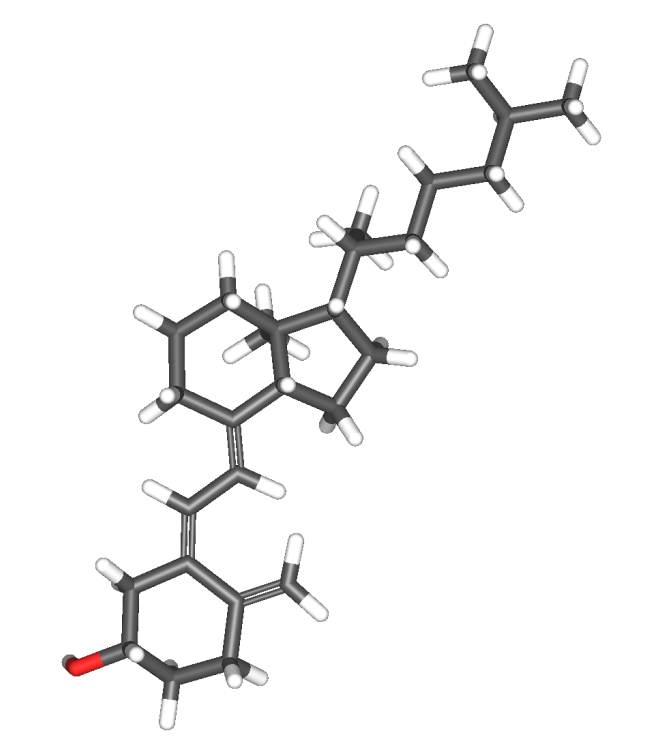
Over the last several months I’ve gotten press releases just about every week about Vitamin D, usually talking about studies that show health problems connected to Vitamin D deficiencies. A lot of this discussion about “the optimal dose” of Vitamin D is still under debate, though. The main problem is that it is possible to get too much. Stay tuned because hopefully scientists will hammer out more definitive answers to this question soon.
In the meantime, though, the biochemistry of Vitamin D is pretty unusual, particularly when you compare it with other molecules that we call vitamins. Vitamin D actually functions as a hormone, a chemical messenger within the body. It’s particularly important for helping the body use calcium to build bone.
However, Vitamin D production in our bodies depends on sunlight. We need UV light from to transform a molecule that looks a lot like cholesterol (a steroid molecule like testosterone, which I guestblogged about this week) into the Vitamin D that we need. We can store extra in fat deposits and many animal fats are a dietary source of Vitamin D.
From the number of studies that indicate Vitamin D deficiencies, my guess is that most people probably are lacking in Vitamin D even though it’s fortified in milk and found in animal fats. And even natural production can vary a lot. Lighter skinned people tend to make more than darker skinned people. Based on where you live, how much time you spend outdoors, your genes and your age, your production will vary, too. On top of that, you don’t want to expose yourself to so much sun that you’re putting yourself at risk for skin cancer.
But Vitamin D is also a fat-soluble vitamin, which means that the body has a hard time getting rid of it if you make too much. Taking too much of a water-soluble vitamin, such as Vitamin C, isn’t usually a problem. Any extra will just get flushed out with your urine. But too much Vitamin D buildup in the wrong place can lead to calcium deposits.
So, I’ll be interested in what the experts decide is the optimal daily intake and how many health issues might (or might not) be related to levels of Vitamin D.
